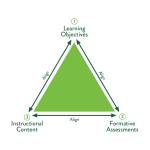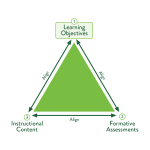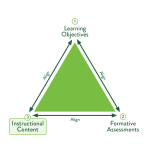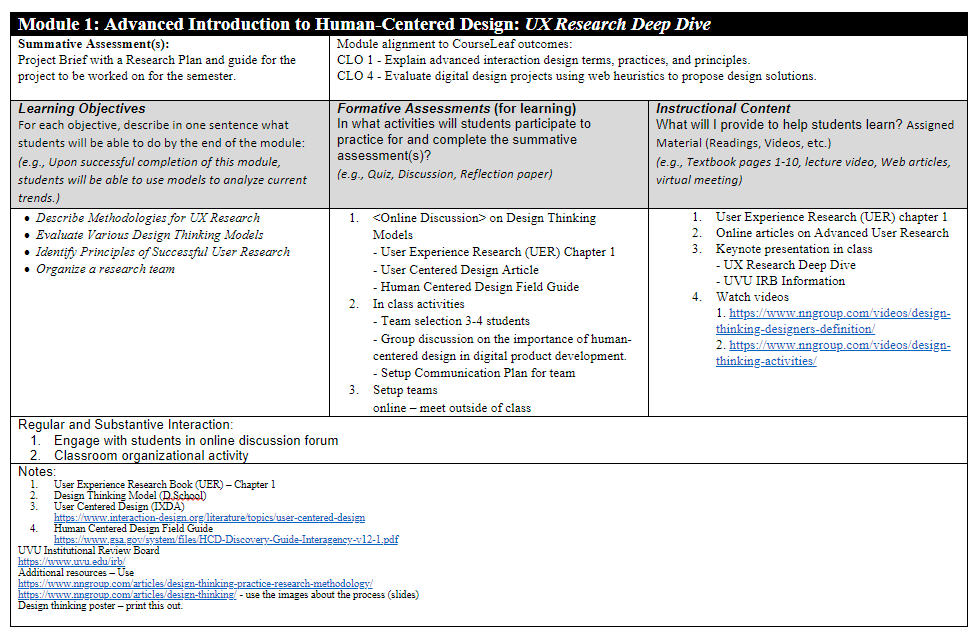23 Section 4: Module Plans

Complete each of the module plans. You will use the Backward Design principles here as well, but on a smaller scale.
This process may take an iterative approach. At this point, you should have an idea of the flow of your course and the topics you will cover in each module.
Module Title
For each module, determine a title that captures the essence of the topic covered.
Learning Objectives

Write the learning objectives for each topic. Make sure each learning objective is measurable and uses a measurable verb. (“Understand” is not a measurable verb.) As needed, review the chapter on Writing Measurable Learning Objectives.
- Please consult this list for some suggested verbs. (This list is not exhaustive; other verbs may be acceptable.)
- NOTE: There are three spaces given for objectives, but you can have more or less, whatever best describes what you will be seeking to accomplish.
- If you need ideas for measurable verbs, assessment questions, and instructional strategies, review the Bloom’s Taxonomy Interactive.
Refer to the “Design Resources” and “Sample Module Plans” links, which are also included in your CDP, as needed.
Formative Assessments

As you brainstorm the formative assessments, ask yourself, “What activities will I give the students to help them practice what they are learning?” Make sure they align with the Learning Objectives for the module.
Refer to the chapter on Formative Assessments as needed.
Instructional Content

What materials will you provide to help your students learn? This might include assigned reading, lecture videos, web articles, or virtual class meetings.
Alignment
The cells for Summative Assessment and Module Alignment refer to the Backward Design Process table at the top of the design plan (see Images 3-1 and 4 in Section 2: Course Outcomes and Summative Assessments). They are meant to help you easily check alignment with the course outcomes and summative assessment(s).
Regular and Substantive Interaction
If you are creating an online course, you are required to provide evidence of regular and substantive interaction (RSI) to meet Department of Education requirements for financial aid. If your course is fully in-person or face-to-face + Online, you do not need to include information on RSI in your module plan.
The following video explains what RSI is:
OTL has created an RSI Articulation document for faculty who have additional questions about RSI:
Notes
In the notes section, add possible activities for that module. Remember, the CDP is just a planning document and it will evolve as you begin development.
Example
In the CDP, you will find a link to “Sample Module Plans” which includes examples from different disciplines.
Here is one example of a completed module plan:

